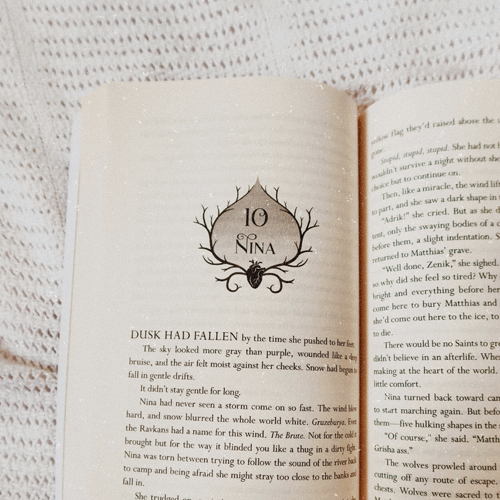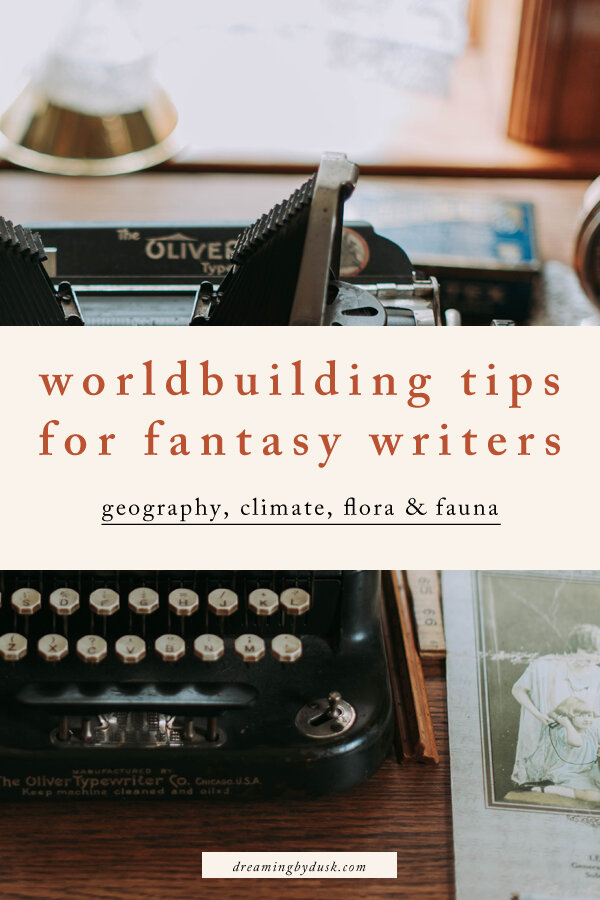World-building Inspiration: Geography
/World-building is one of my favourite things to do. Especially when I find a new project to work on or I need a break from my current writing project.
Creating a unique, exciting world from scratch it what makes different fantasy novels so unique and exciting to read.
I’ve been thinking for a while now that fantasy literature is starting to make a comeback. And this makes writing fantasy even more inspiring and fun to do. But it is no easy feat. There is a lot of work that goes into creating a rich, imaginative world that feels real.
And each writer has their own process for how they handle this behind-the-scenes part of writing a story. Today, I thought I’d give some insight into how I do world-building for my own creative writing projects.
This is the first in a 4-part series and will tackle the some of the basics of geography in fantasy world-building.
Terrain
This is how the world looks to the eye. What an inhabitant of this world might see, smell, touch, and hear every day. You want to give yourself a general idea of the layout and land masses in your fictional world.
One thing that helps me is to take inspiration for fantasy world-building from the real world around me. I have seen some of my favourite authors do this. Renee Adhieh’s “The Wrath and the Dawn” was inspired by the Middle East. Tomi Adeyemi’s “Children of Blood and Bone” was inspired by the continent of Africa.
Do research. Study the world around you. You might even go further than earth and do some astronomy research. What are the other planets in our solar system like? Is there inspiration there as well?
Some Questions:
Think of places like deserts, rain forests, woodlands, plains, valleys, jungles, mountains, meadows, and ice fields.
Are there any natural barriers such as mountains, deserts, ice fields, rivers, seas, swamps, chasms?
How does this world’s environment help or hinder the inhabitants that live there?
Seasons
The climate and weather of the fictional world is also related to its terrain and land masses. Summer, Autumn, Winter and Spring form the seasons in the real world. The seasons also vary on different continents as well. You might use this as inspiration for your writing. But there are also instances in fantasy fiction of writers using the seasons imaginatively.
Such as C.S. Lewis’s “The Lion, The Witch, and The Wardrobe”, wherein the land of Narnia is trapped in eternal winter. There is also George R.R. Martin’s “A Song of Ice and Fire” where the seasons can last for nearly a decade.
One thing I like to keep in mind is that climate and seasons can shape what happens in the story. Depending on what the weather is like and how the characters respond to those challenges that are out of their control.
Such as in the ancient world, military campaigns were held in the spring and summer to avoid journeys in the winter. And with hot weather, comes long droughts and wildfires. These are just some examples of why seasonal changes are key to fantasy world-building.
Some Questions:
What is the weather in summer like?
What is the weather in winter like?
What is the weather in autumn and spring like?
How is daily life affected for the inhabitants by these weather changes? Such as attire, cuisine, trade, warfare and cultural activities.
Flora & fauna
The types of plants that grow in the environment and the animals that live there are also related to the terrain and climate. These are also things that impact the daily life of inhabitants of your fantasy world, so it’s important to focus on them and research them well.
In the past, I’ve taken to watching BBC nature documentaries/docuseries to find ideas for fantasy flora and fauna. Different documentaries from BBC focus on different land masses, continents and environments. All the wildlife present in the regions. This way of world-building is also great for learning about different environments and how wildlife behave in them.
You might also seek out name generators, different mythologies and dictionaries to find name ideas for the wildlife that fills your fantasy world.
Some Questions:
What plants are safe to eat or use as medicine?
What plants are poisonous?
What animals are domesticated and/or sources of food?
What animals are prey and/or predators?
What plants are most common and/or rare?
What animals are most common and/or rare?
Resources
Again, the resources provided by the land is also related to the terrain and flora and fauna of the fantasy world. Things such as timber, fresh water, food supplies, metal ore, shelter, heat, light, and so on. The things provided for by the world itself and the things that are man-made.
This is probably one of the most important things. It will show how the inhabitants use what is available in the world around them to survive. It will show how the culture of the inhabitants is shaped by what is around them.
Some Questions:
What building materials are available?
What are renewable sources?
What are non-renewable sources?
What raw minerals and metals are available?
There you have it! These are some of the main ideas I focus on when world-building in fantasy writing projects. To recap, these are terrain, seasons, flora & fauna, and resources. This is what I focus on, but you might explore the subject further. Remember, this is only the first of 4 parts, so stay tuned in to read the rest in due time. In the meantime, use these world-building tips and prompts to begin forming the basic structure of your fictional world. have fun writing!
Disclaimer: I am not a writing teacher or published author. However, I do consider myself to be a writer as I’ve been writing for more than 5 years and am currently working on a fantasy novel since 2019. I am also a current member of online writing communities on social media. This post is written for entertainment and inspiration. I hope you like this content, but I am not liable for how you choose you use and interpret what I write in this post.
follow me elsewhere for more fun, creative content and updates













